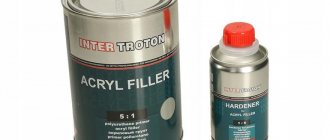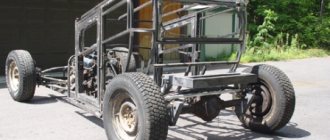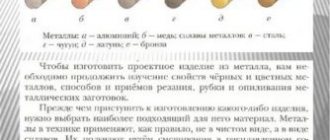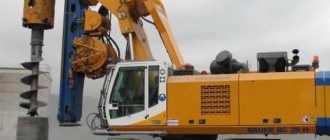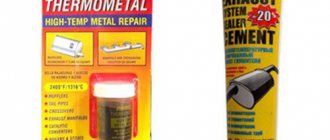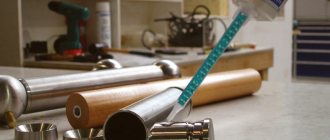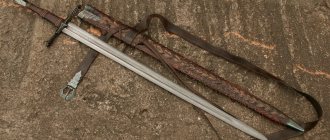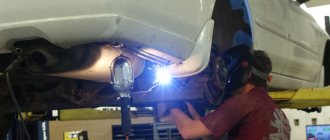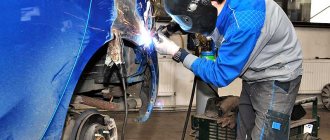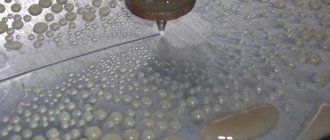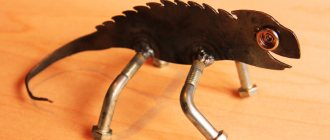When processing a car body to create a uniformly smooth surface, it is almost impossible to do without a primer. Correctly selected acid, epoxy or acrylic primer for a car creates additional protection, eliminates dents and irregularities, and ensures a tight fit of paintwork materials. The most popular due to its ease of use and quick-drying properties is acrylic. However, other types of primers have their own advantages and applications.
What is the soil for?
Automotive primer (from German der Grund - “soil”, “base”) is a specialized viscous mixture that tends to harden and acts as an intermediate layer between metal and paint.
It performs a preparatory function and solves the following tasks:
- ensuring the anti-corrosion resistance of the body and parts, protecting them from moisture and rust;
- improving the adhesive properties of the surface when applying paint and varnish;
- elimination of dents, cracks and chips during cosmetic repairs of the car;
- increasing the service life of car enamel, its strength and preservation of appearance;
- creating a flat surface for painting a car, which ensures good quality of work performed.
The chemical industry produces and markets a large number of base mixtures, differing in composition, number of components and purposes of use. They are sold in liquid and paste form, packaged in cans or aerosol cans.
Based on their protective properties, all types of primers can be divided into 4 groups:
- Passivating. Used for processing the bottom, sills and wings. The surface treated with this composition is impervious to water and air.
- Protective. Slow down the spread of the lesion in case of damage to the paintwork.
- Phosphating. As a result of their use, the surface layer of the metal is corroded and a protective film is formed due to the formation of poorly soluble substances.
- Modifiers. They are applied directly to rust, preventing the spread and increasing resistance to its reappearance. For the protective reaction to occur effectively, a temperature of at least +15°C is required.
Types of primers
To maximize the prevention of corrosion, the primer should be selected taking into account its main characteristics, such as: the basis of the composition, adaptability to certain types of metals, feasibility of use in external finishing work. You will have to choose among very different soil mixtures.
Phosphating
Suitable for all metals, but used primarily for coating steel surfaces. The composition is based on a mixture of solvent and phosphoric acid, which has high heat resistance (withstands up to 220°C). Paint adheres well to such a primer; it is preferable to apply it to coatings that are not affected by corrosion. When finishing external structures, it does not always provide the expected protection.
Acrylic
Compositions characterized by safety, absence of unpleasant odor and high drying speed. Acrylic-based primer mixtures allow you to hide minor defects on external metal surfaces, create a durable anti-corrosion coating, and ensure good adhesion. Water-based acrylic primer can be used on various types of metals that are not damaged by rust.
Passivating
Used for aluminum metal structures and products made from other ferrous metals. The main components are chromic acid salts (it is important that their concentration is high). They prevent the interaction of external structures with the environment, which eliminates the development of corrosion processes. The group of these primer mixtures includes alkyd, polyurethane and epoxy.
Tread
They are used for various metals and have enviable anti-corrosion properties. The main components of the mixtures: aluminum, magnesium or zinc powders (their content can reach 90%). They create a strong outer protective film, preventing rust from spreading. Even if cracks appear on the structure, the zinc components of the soil will protect it from corrosion.
Inhibiting (two-component formulations)
Can be used for all types of metals. After application, the mixtures are converted into enamel primer, excellent for its high anti-corrosion properties. They are water- and oil-soluble. They are not suitable for processing external metal structures that may be subject to heating in the future, since the protective film will emit an unpleasant odor.
Insulating
Mainly used for ferrous metals, but can also be used for non-ferrous metals. The main components of the mixtures are neutral pigments and lead white. They are not capable of providing a long-lasting effect, so they are hardly suitable for exterior finishing work. They also cannot be painted.
Transformative
Designed for external metal structures damaged by corrosion. The composition is based on surfactants. They convert existing rust into an anti-corrosion film. To ensure complete protection of the metal, it is necessary to combine this type of primer with a passivating mixture.
Varieties by number of components
An important performance characteristic of a primer is its drying speed.
This indicator depends on the use of additional components when composing the mixture: filler, hardener, various chemical additives and elements.
Based on this criterion, soils are divided into 3 groups:
- One-component. They go on sale ready-made. Before starting work, just stir them until they have a homogeneous consistency. They are used extremely rarely in auto repair shops and service stations due to the long drying period (several days).
- Two-component. Before use, they require adding a hardener, which saves a lot of time when working. Dries in 24 hours.
- Ethanol. Used to eliminate defects in minor damage. They use the ability of alcohols to quickly evaporate, which allows the composition applied to the surface to dry within 1 hour. In both soft and hard consistency, they are convenient for application and subsequent sanding.
Why prime metal before painting?
The primer directly determines how strong the coat of paint you apply to the metal will be. It promotes good adhesion of the paintwork and the surface itself. In addition, it plays another significant and important role - protection against corrosion and rust. After all, metal products often fail precisely because of it.
To keep metal damage to a minimum, you need to carry out the entire protection package. Some types of primers are so-called rust converters. It is used to cover metal that has already been corroded in order to extend its service life.
Primers for metal surfaces are divided into several types: insulating, phosphating, passivating, protective, inhibiting and rust converters. Let's look at each in more detail.
Classification by composition
The composition of the mixture determines the place and technology of its application. The presence of aggressive acids in the primer forms a protective film due to chemical interaction with the metal. The presence of resins provides physical impermeability to moisture.
The addition of zinc, aluminum, and chromium powders creates the effect of galvanized body and parts, and inert particles guarantee water repellency.
In addition, application is carried out on different materials and each of them requires its own mixture.
All primers for cars are divided into 2 main types:
- Primers (from the English prime - “main”, “first”), intended for primary processing. Their main tasks are to create anti-corrosion protection for the body and ensure better adhesion of the car enamel to the surface.
- Fillers (from the English fill - “fill”). They are used during secondary finishing for leveling, forming a substrate for paint and protecting against weak mechanical influences.
Acidic (for rust and problem areas)
The action of these compositions is based on the principle of passivation or phosphating, since the most commonly used component in them is phosphoric acid. It allows you to implement the mechanism of adhesion to the surface:
- penetration of the primer into the metal structure to a depth of 0.05 microns due to corrosion of the surface;
- entering into a chemical reaction with the formation of sparingly soluble phosphates;
- the formation of a durable anti-corrosion film from them during hardening.
It is recommended to apply the primer in 2 layers, as a result of which its maximum possible adhesion to the surface being treated is achieved. This provides not only protection against rust, but also high quality and durability of the paintwork. The adhesion process of acid mixtures is equally effective with any alloys from which a car can be made (galvanized and galvanized steel, non-ferrous metal, aluminum alloys, etc.). The aggressiveness of the impact is used to process hard-to-reach places and parts.
It should be taken into account that it is no longer acceptable to putty on such a surface. Application of the material causes a reaction that destroys the primer layer.
Epoxy for metal
Another equally popular group of primers are epoxy resin-based primers. When using them, material properties such as viscosity and density are used. Resins create an air- and moisture-proof thick layer up to 0.15 microns, which provides long-term (up to 7 years) protection for treated parts. The use of such mixtures prevents the appearance of bubbles, and the increased stickiness allows them to be applied over putty, metal and remnants of old paintwork.
Epoxy primers do not require sanding. You can putty and paint over them without waiting for complete drying. And although it is recommended to apply a layer of acrylic on top of them, practice shows that this is an unnecessary precaution. Being chemically neutral, epoxies can act as an insulator between problematic or incompatible surfaces and materials.
Acrylic primer
Acrylics belong to the class of fillers (secondary primers) and are intended to eliminate minor risks and surface defects remaining after sanding, as well as to create a substrate for final painting. To ensure color stability, they use colored pigments: red, black, white and gray. For minor abrasions and scratches, this makes the damage invisible, and also increases the covering power of the enamel and saves its consumption.
Many acrylic mixtures allow for a “wet on wet” painting method. This eliminates grinding and saves processing time and labor costs. But the mixture should be applied in 2-3 layers to create a thickness of 100-150 microns. Acrylics are resistant to temperature fluctuations, humid conditions, and mechanical vibrations. You can work with them on both metal and plastic.
They are two-component; depending on the TDS, they are mixed with a hardener and solvent in various ratios - 5:1, 4:1 or 3:1. This determines the viscosity and adhesive properties of the resulting material. But single-component aerosol levelers, produced in cans, have gained particular popularity. They are convenient for cosmetic repairs, do not take time to dilute the mixture and dry quickly.
Composition for plastic parts
To prime plastic parts (bumpers, fenders, interior decorative elements), special adhesive compounds are used, which are applied in one layer and create strong adhesion to the material. This is achieved by liquefying the surface and then hardening it. Most often, one-component acrylic and alkyd mixtures are used for these purposes. They are transparent, and to distinguish the primed surface from the untreated one, a little silver paint is added to them.
However, in 80% of cases, plastic parts go on sale already prepared and do not require reprocessing.
Pros and cons of metal pre-priming
The key advantages of pre-priming metal surfaces include the following:
- Increased resistance to mechanical factors and chemicals.
- Protecting surfaces from mold and fungi. This effect is achieved due to the presence of antiseptic components in the composition.
- Increased adhesion. Primer helps securely hold a variety of topcoats. It is permissible to apply different types of paints or adhesives to it.
- Heat resistance. The soil is able to withstand significant temperature fluctuations.
- Increased resistance to water. Thanks to this, the primer can be applied to vehicles.
- Excellent decorative properties. The soil is not always made colorless. It can have any shade - red, yellow, gray, black, white. There are also products that can be tinted in different colors.
It is always worth considering the fire hazard of such compositions.
Also, the primer may contain toxic components. This is why it is so important to use personal protective equipment when working.
Advantages and disadvantages of soils
Despite the fact that the primer is not visible at the end of the work, both the quality and durability of the completed painting depend on it. After high-quality coating application, the following are guaranteed:
- protection against rust and corrosion;
- smooth substrate for painting;
- presentable appearance of the car;
- there are no reasons for cracking, bubbles and subsidence in the enamel.
What primer should be chosen to achieve this is up to the car owner to decide for himself, but one piece of advice from the experts is worth listening to. The point is that you cannot skimp on this mixture.
You should choose proven brands: only in this case can you count on getting a high-quality result.
Cheap primers are dangerous because during drying they shrink unevenly, which leads to disruption of the evenness of the coating, loss of appearance, the formation of cracks and the formation of rust.
Features of primer for mineral surfaces
Mineral bases are considered to be:
- Plaster;
- Aerated concrete;
- Concrete;
- Cinder block;
- Brick.
That is, almost all the materials from which the walls and ceilings of buildings are built.
Soil with deep penetration rightfully occupies the main position in preparing “bare walls” for coating. The essence of this operation is to impregnate the base material as deeply as possible, while the polymer component adheres well to the surface particles, making it more porous. This significantly increases the adhesion of the subsequent layer to the mineral base. Often, deep penetration soils have antifungal (fungicidal) inclusions.
In the case when it is necessary to prime a base that is too porous, weak and loose, then it is necessary to use a reinforced primer. A similar composition has more adhesive components in its structure, i.e. when interacting with the material, they will significantly strengthen its upper part. It is worth noting that the consumption of the primer mixture will depend on the porosity of the base being treated. Strengthening primers are typically used on plaster that does not contain enough cement, such as in worn-out buildings. However, you should always remember that such mixtures can only strengthen the material to the depth of their penetration. From here it is clear that they will not save old and crumbling plaster.
A general purpose primer (also known as universal) should be applied between coats. It is designed to improve grip. Allows you to apply paintwork in an even layer. When using it, it is necessary to take into account the structure of not only the base material, but also the paint that will be applied as a subsequent layer.
An anti-alkali mixture will be required only if solvent-soluble paints containing alkali are subsequently used. The preferred surfaces in this situation would be newly laid concrete, cement screed or a surface treated with anti-friction.
The non-contact mixture is used for working on particularly smooth surfaces, for example, marble slabs, drywall, or bases painted with oil paints. The main purpose of its use is to increase the adhesive properties of the base.
Popular manufacturers of primers for painting
The leading positions in surveys and ratings belong to foreign companies, among which the products of widely advertised brands stand out:
- Hi-Gear;
- Liqui Moly;
- Dynacoat;
- Mobihel;
- NOVOL;
- Duxone;
- ABRO.
Domestic manufacturers, distinguished by high-quality products and gaining fame in the country, are represented by the following companies:
- “Russian Paints” (Yaroslavl);
- Moscow LLC "Empresa-M";
- LLC "KhimTorgProekt" from St. Petersburg.
Preparing the car for priming
In order to prime a car, it is necessary to place it in a clean room with the proper level of ventilation. If you plan to apply the primer locally, then all nearby parts of the body to which the composition will not be applied must be covered with paper and secured with masking tape.
Then prepare a spray gun (spray gun) for the primer composition. It is advisable not to save on this instrument, although it will not be cheap - from about 10,000 rubles.
Depending on the volume of work, you need to choose one of two types of spray guns:
- For full priming, it is better to use a gun with a nozzle diameter of 1.8-2.0 mm. It is more versatile, and if there is no budget or other possibilities, it is better to purchase such a device.
- For partial and spot priming, a spray gun with a nozzle diameter of 1.3-1.4 mm is more suitable.
The best primary acid soils
Among single-component acid primers that do not require the addition of catalysts, experts highlight Mobihel Primer 1K. It is convenient and easy to apply. Used for priming on steel, galvanized and aluminum. Has a short drying time. Estimated price 950-1 thousand rubles. for 1 l.
In two-component ones, a hardener is added, often included with the main mixture. Widespread:
- NOVOL Protect 340 Wash Primer - used on ferrous and non-ferrous metals. Hardens quickly. Does not require sanding, but acrylic processing is required. Sold together with hardener. Average prices: 500 rub. per set 0.2+0.2 l; 1.9-2 thousand rubles. — 1+1 l.
- Radex CR 1+1 Activator - applied to any metal surface. Recommended for repairing new cars. The price for a set of 2 cans ranges from 2 thousand rubles. up to 2.5 thousand rubles.
Features of choice
First of all, anti-corrosion mixtures are selected based on the type and condition of the metal that needs to be treated. The main purpose of a primer when coating ferrous metals is to slow down corrosion. Iron, cast iron, black steel and alloys based on them used for outdoor work are very susceptible to corrosion due to interaction with a merciless environment. For these materials, if they have already begun to rust, a converter should be used as a priority. It will at least partially eliminate traces of corrosion. If the primer mixture is selected for external products made of non-ferrous metal or alloy, for example zinc, copper, brass, aluminum, then its primary function is to ensure maximum adhesion between the treated surface and other finishing material. For this purpose, you can choose compositions based on organic solvents, with a urethane base, and containing zinc. They can be used as a protective coating for galvanized iron or steel. Bronze, brass and copper are best protected with polyurethane or epoxy varnish. On sale you can find types of primers for metal that are applied to hide difficult to remove stains, for example, from grease, soot, etc. This step in the repair cannot be skipped if you do not want the stains to reappear over time or provoke peeling of the decorative finishing. After choosing a primer, you can begin to study the instructions for its external use.
IMPORTANT: 1. pay attention not only to the properties and types of primer, but also to the form of its release. To dilute powder bases and concentrates, it may be necessary to purchase a special solvent; 2. check the compatibility of the selected primer mixture with the planned decorative coating - they may be incompatible.
Recommended sealer primers
A group of sealers (insulators) is designed to eliminate the possibility of contact of conflicting materials. The most effective for this purpose are viscous epoxies, which create a dense protective layer.
Acrylic primers designed for wet-on-wet work also have insulating properties. They are used either as a direct substrate for painting, or with the subsequent addition of filler.
Rating of the best primers for 2022
Acrylic
3rd place: “SENBION S-Gr-14810/1”
This mixture contains a special filler of original production, which specifically increases the adhesive degree of application. Therefore, the composition can be used on various materials without doubting the quality of adhesion. The manufacturer recommends working with a primer on thin-layer materials, as well as on OSB boards and plywood bases. The coating is breathable, durable, and has good absorbent properties. Prevents the appearance of mold and mildew.
| Name | Index |
| Manufacturer country | Russia |
| Sales volume, liters | 1.03 |
| Additional properties | No |
| Price, rubles | 170 |
SENBION S-Gr-14810/1
Advantages:
- Low price;
- Antiseptic properties available;
- Without smell.
Flaws:
- Afraid of frost.
2nd place: “DALI 1L 6 15701”
The material is distinguished by its strengthening properties and is excellent at preparing loose and porous mineral surfaces for processing. These include wood, plaster, concrete and brick. It is possible to work with the mixture both outside and indoors. Thanks to its dispersion-water base, the composition will save on finishing painting.
| Name | Index |
| Manufacturer country | Russia |
| Sales volume, liters | 1 |
| Additional properties | Has frost resistance |
| Price, rubles | 190 |
DALI 1L 6 15701
Advantages:
- Frost resistance available;
- Budget cost;
- Fast drying.
Flaws:
- Not detected.
1st place: “RUST-OLEUM Zinsser bulls yey 1-2-3 255403”
A fairly expensive type of primer from a popular Western brand. Despite the more than high price, it is a product with increased efficiency. The composition applies very smoothly, has a high level of adhesion to the surface, and has a stain removal function. It can easily work on aluminum and galvanized metal, as well as glossy paintwork materials and ceramic tiles. The resulting coating will be resistant to the formation of fungus and mold. It has a pH-neutral component, so it can be used in food production.
| Name | Index |
| Manufacturer country | Sweden |
| Sales volume, liters | 0.95 |
| Additional properties | Possesses pH neutrality |
| Price, rubles | 1600 |
UST-OLEUM Zinsser bulls yey 1-2-3 255403
Advantages:
- Versatility;
- Multifunctionality;
- PH neutrality.
Flaws:
- Non-critical weak odor of ammonia (dissipates quickly).
Contactless
3rd place: “GU - 5l Goodhim 73091”
This composition is particularly versatile, comes in bulk containers, and is perfectly suited for processing both horizontal and vertical surfaces. It is quite suitable for preparing the base for the final stage of finishing. It is possible to work both indoors and outside on the facade. The manufacturer claims extremely low consumption - from 80 to 120 grams per square meter.
| Name | Index |
| Manufacturer country | Russia |
| Sales volume, liters | 5 |
| Additional properties | Contains inclusions of fire retardants |
| Price, rubles | 560 |
GU - 5l Goodhim 73091
Advantages:
- Spacious packaging at a low price;
- Economical consumption;
- Contains inclusions of fire retardants.
Flaws:
- Not detected.
2nd place: “TERRACO TERRAGROUNT Maxi universal”
This product is a budget version of its Western counterpart, has a low cost, however, has not lost much in its functionality. Supplied in very large containers. Has fungicidal properties. Can be used on concrete and brick, and has the characteristics of increased penetration.
| Name | Index |
| Manufacturer country | Russia |
| Sales volume, liters | 10 |
| Additional properties | No |
| Price, rubles | 780 |
TERRACO TERRAGROUND Maxi universal
Advantages:
- Increased volume of commercial containers;
- Increased degree of penetration;
- Antiseptic properties.
Flaws:
- Not found.
1st place: “CERESIT CT 19 5 kg 1/120 23681”
This composition is intended for treating fragile, crumbling and poorly absorbent surfaces (cement, concrete, brick, stone). You can work both inside buildings and on the facade. The manufacturer claims increased adhesive properties and guarantees a high degree of smoothing. Suitable for finalizing decorative finishes, although it also works well for applying glue.
| Name | Index |
| Manufacturer country | China |
| Sales volume, liters | 5 |
| Additional properties | No |
| Price, rubles | 850 |
CERESIT CT 19 5 kg 1/120 23681
Advantages:
- Good price-quality ratio;
- Ability to level the surface;
- Dries quickly.
Flaws:
- Not detected.
Polyurethane
2nd place: “TIKKURILA INDUSTRIAL TEMADUR 50 TAL polyurethane 2.25 l 50672210330”
An excellent water-based polyurethane paint that has the properties of a primer, which means there is no need for a final finishing step. Supplied in fairly large containers. The composition also has the ability to be tinted. Product of a world famous Scandinavian brand.
| Name | Index |
| Manufacturer country | Finland |
| Sales volume, liters | 3.5 |
| Additional properties | Tinting |
| Price, rubles | 2800 |
TIKKURILA INDUSTRIAL TEMADUR 50 TAL polyurethane 2.25 l 50672210330
Advantages:
- Possibility of tinting;
- There is no need for final finishing;
- Product from a well-known Finnish company.
Flaws:
- Not suitable for medical institutions.
1st place: “Polyurethane two-component repair composition for floors for 15 sq.m. GRASPOLIMER 280010"
This mixture is primarily proposed to be used as a repair agent. It is designed to repair horizontal surfaces in industrial premises. The mixture is resistant to temperature changes, exposure to direct sunlight, mechanical shock and increased vibration. The manufacturer claims that one of the main characteristics is economical consumption.
| Name | Index |
| Manufacturer country | Russia |
| Sales volume, liters | 5 |
| Additional properties | No |
| Price, rubles | 4500 |
Polyurethane two-component repair composition for floors for 15 sq.m. GRASPOLIMER 280010
Advantages:
- Dries quickly;
- Resistance to mechanical damage;
- Economical spending.
Flaws:
- Not detected.
Primers for secondary application
The functions of fillers are varied, since they are the final stage of work before applying enamel and are designed to eliminate all existing surface defects, level planes and joints, isolate problematic materials and ensure a tight adherence of paint. When working with them, it is necessary to eliminate the slightest risks and carefully polish the surfaces (to a depth of 30 microns). Leveling should remove all defects and pores remaining after putty, and level out the transition points from one plane to another.
Colored, for painting
The use of colored primers became popular in the 80s and 90s. last century. Few people imagined that such a simple know-how as adding coloring pigments to the mixture would become widespread and provide such great savings in material consumption. This especially applies to interior parts and the space under the hood. The Japanese, Koreans, and more recently AvtoVAZ have refused to paint them, considering treatment with a colored (tinted) primer coating sufficient.
High build primers
The standard thickness of primers applied in 2-3 layers is 100-140 microns. However, a number of manufacturers (Liqui Moly, AUTOP) produce compositions that, when applied, form a layer of 260-300 microns. They are convenient to use on large surfaces during major repairs. The use of such primers ensures high-quality leveling and allows you to eliminate the putty step from the processing process. These primers are most often produced in the form of an aerosol and demonstrate high-quality adhesion when painted wet.
Soil-aerosol companies
The convenience of using the compounds in aerosol cans, their ability to dry quickly and the ability to save effort and time (there is no need to dilute the mixture or work with a spray gun) were highly appreciated by repairmen. The Russian market today is dominated by such manufacturers as Kudo, Sadolin, Loctite, Jeta Pro, Brulex, NOVOL and many others. The price is also attractive - from 250 rubles. up to 800 rub. per canister with a capacity of 0.5 liters.
Purpose of primer mixtures
First of all, priming the bases will help to apply subsequent layers of paintwork in a better manner. In addition, such a coating will last much longer. There are some types of primers that can regulate the porosity of the surface being treated while simultaneously strengthening it. There are also compounds that prevent premature wear of materials and protect them from rust. It is worth noting that the use of primers for painting will significantly reduce the consumption of expensive paintwork materials. Thanks to priming, the paint lays down in an even layer, and existing unevenness will be smoothed out.
High-quality primers for plastic surfaces
For high-quality priming of plastic parts, their preliminary preparation is important, which consists of heating or exposing the polypropylene to an open flame (evaporation technology), subsequent matting and removal of fats and resins. The steady popularity of NOVOL, Reoflex and Liqui Moly in this area wavered after the appearance on the market of new products from the German Spies Hecker and the Japanese Kansai.
- Acid primer for cars
- Which brake fluid to choose
- The best way to treat the underbody of a car against corrosion with your own hands
- Which hard wax for cars is better?
Features of primers with non-contact mixtures
In practice, non-contact primer has proven itself to be far from being the optimal option for preparing surfaces before laying ceramic tiles, much less porcelain stoneware. This is due to the fact that tile adhesive has a higher adhesive ability than the soil itself. The adhesion strength of tile adhesive starts from 0.5 MegaPascals, while for a non-contact composition it is only 0.4 MegaPascals (with crumbling, weakly absorbent materials). All this leads to a decrease in the direct adhesion of the glue to the surface. Due to the large mass of porcelain stoneware or ceramic tiles, increased pressure will be created on the primed base. As a result, the non-contact may “peel off” from the surface along with the tiles or begin to peel off.
In order to avoid a negative result, in the process of preparing the base it is necessary to use high-quality primers from well-known brands. It is also not recommended to use non-contact solutions on various types of loose surfaces. On such substrates, the primer will not be able to provide the adhesion declared by the manufacturer. The adhesion force of the mineral base to the applied layer will be significantly reduced. Taking into account the fact that the adhesion of plaster solutions starts from 0.3 MegaPascals, one cannot expect a positive effect from such treatment.
In addition, you should not apply non-contact solutions to non-absorbent substrates, which include plastic, metal or wooden surfaces (some types of wood). With such bases, the layer will not be able to adhere normally, and even if this happens, we must not forget about the main property of non-contact - its vapor permeability. The accumulation of condensation between the primer and the surface will very quickly lead to the appearance of defects.
High quality rust converters
Converters offered for sale differ in chemical composition, packaging form and cost. Customers left the best reviews about the brands:
- AGAT Avto Tsinkar is a 3 in 1 anti-rust primer for cars. Available in plastic bottles with a spray bottle. The composition includes zinc, manganese and phosphates. Under the influence of the converter, a protective coating is created. Magnesium provides alloying to the metal surface.
- DINITROL RC-800 – sold in plastic bottles. Apply to the surface with a soft brush. After the first layer has dried, it is advisable to repeat the treatment after an hour. For a large surface, you can pour the liquid into a special apparatus.
- PERMATEX Rust Treatment is a quick-drying latex-based coating. Used to remove rust before painting. Before application, the surface is cleaned of oil, dirt and loose rust. Can be used on wet metal.
Some compounds are toxic and have a strong odor. Before working with them, you must wear protective gloves, a mask and goggles.
Features of do-it-yourself priming
If you plan to prime the car exclusively with your own hands, then first of all you need to take care of your own protection, using a special suit. Mask and safety glasses.
The primer is carried out in several stages. The first time it is applied in a very thin layer and allowed to dry completely. The secondary layer is laid at least 2 times, each time waiting until the previous layer has completely dried.
Whether all layers have dried or not must be checked according to the instructions; it indicates how long it will take for the composition to completely harden. After this you can start sanding. It is performed either with regular sandpaper or with a special machine. After each pass, you need to remove the resulting dust, and check the result by touch - the surface of the car must be absolutely smooth, without scratches or unevenness. Only in this case will the paint lie flat and have good adhesion to the body.
Treatment
The soil can be treated either dry or with water. It should be remembered here that soils partially absorb water, which over time leads to corrosion of the metal. Therefore, it is better to process dry. A special grinding machine can help with this. Under metallic, the body should be sanded with R-600 and R-800 sandpaper. But for ordinary acrylic, R-400 and R-500 will be enough.
What to do with new parts?
New parts need to be given extra attention, because they are covered with shipping primer (usually black). In order for the repair of the machine to be of high quality, the transport soil must be cleaned with R-240 sandpaper down to the metal. After this procedure, you can put 2-3 layers of soil. And after 10-15 minutes, show it with a primer or paint of the opposite color. The next day you can clean it up. During processing, development may show minor unevenness. In this case, you will need to re-prime the flaws or the entire part.
Do-it-yourself car priming is absolutely safe if you approach it correctly. The fact is that during any paintwork, including body priming, it is necessary to use personal protective equipment (respirator, gloves, suit). Primer vapors are very harmful to the body. Therefore, be attentive to your health.
